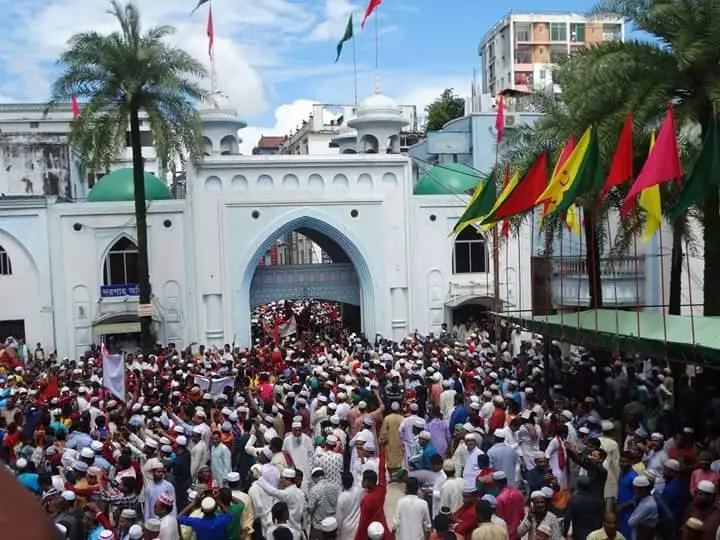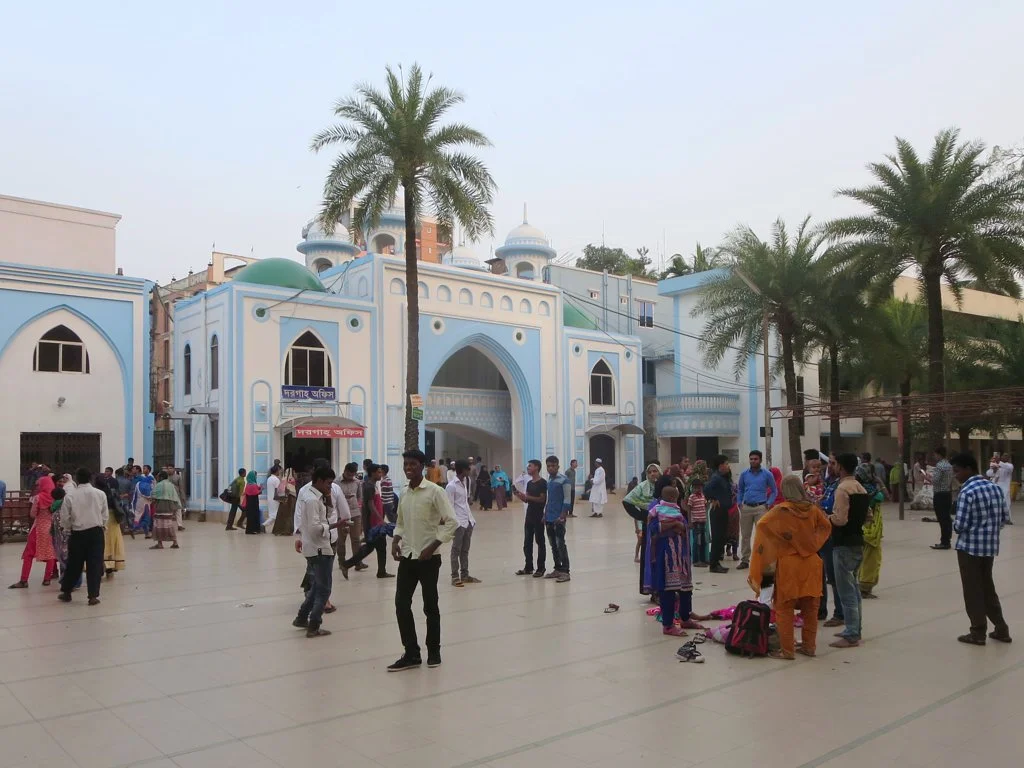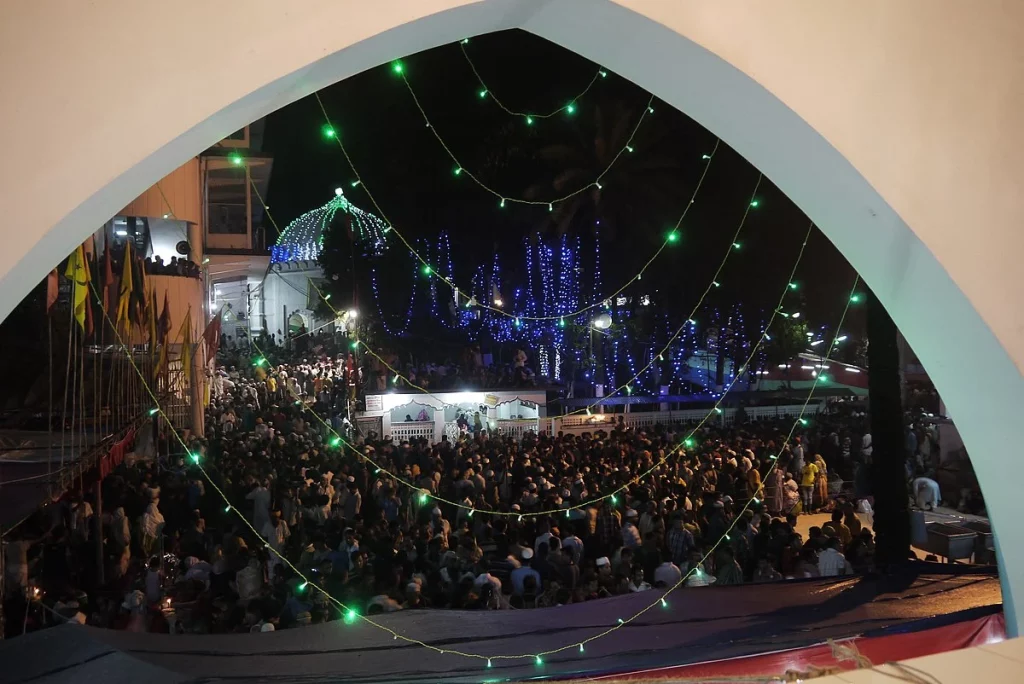A Mystical Tale of an Enlightened Soul
You know, there is reverence and respect for saints among all Muslims worldwide. They are our role models, our guides, and our inspiration. One of the most revered saints in Islam is Hazrat Shah Jalal.




It is said that the life of a great saint is nothing short of a mystical tale. Such is the case with one of the most renowned saints in Islam, Hazrat Shah Jalal. His life was full of wisdom, miracles, and spiritual experiences, and he is recognized as one of the most respected religious figures in history. This informative and engaging post will introduce you to the life of Hazrat Shah Jalal and explain why he is held in such high esteem by Muslims worldwide. In addition, this post offers an insightful glimpse into the world of Sufism, which is often shrouded in secrecy. May his story inspire us all to lead lives of purpose and devotion. So, let’s dive into the life of this great saint.
Birthplace Unclear – Yemen or Turkey?
Few people know that the great Sufi saint and poet Mawlana Jalal ad-Din Muhammad Rumi had a contemporary named Muhammad bin Ibrahim Qureshi, a man of great learning and piety who was the father of the well-known saint Shah Jalal. Shah Jalal’s mother, Fatima Saida Hasina, was a descendant of the great Imam Hussain (Radiallahu’anhum), making her a woman of noble lineage. It is believed that Shah Jalal’s father was a native of Kenya, though there is no clear proof of this claim.
Claims about Shah Jalal’s origins have been the subject of much debate. It is unclear when and where Shah Jalal was born. Some scholars say he was born in 1271 in the village of Konya, Turkey, while others believe he was born in Kaninah, Yemen. Also, it is believed that his ancestors were from Yemen; he was born in Konya, Turkey, where Rumi’s Mazar is located. For this reason, he is called “Mujarrad-e-Yemeni” (Bachelor from Yemen). There is no clear consensus on his birthplace. What is known is that Shah Jalal later moved to Yemen as a child or an adult.
The author of Gulzar-i-Ibrar, who wrote the earliest account of Shah Jalal’s life, claims that Shah Jalal was actually from Turkestan. This claim is based on Shah Jalal being a Khalifah (disciple) of Ahmad Yassawi/Yesevi (d. 1166) of the Silsila-i Khwajgan. However, Yassawi was himself the disciple of Khawaja Yusuf Hamadani (d. 1140). Therefore, it is possible that Shah Jalal inherited his Turkestani roots from his spiritual teacher. If this is true, it would add another layer of intrigue to the already fascinating life story of Shah Jalal.
Shah Jalal’s Early Life Years:
Shah Jalal was orphaned at a young age and taken in by his maternal uncle, Sayyid Ahmad Kabir Suhrawardy. He is good in his studies and becomes a Hafiz who can recite the full Qur’an from memory. He also became proficient in Islamic theology and received spiritual lessons from his uncle. After 30 years of study and meditation, Shah Jalal achieved Kamaliyat, which is spiritual perfection. Though he faced many challenges in his life, Shah Jalal’s story is ultimately one of triumph. He overcame great obstacles to become a renowned religious figure and an example to all who encountered him.
Arrival in Sylhet – A Mission to Conquer and Introduce Islam
It is said that Shah Jalal’s uncle Shaykh Kabir once gave his nephew a handful of earth and told him to go to Hindustan and find the place where this earth smelled and coloured the same. He should then pass the rest of his life in prayer and meditation, teaching and propagating Islam.
According to the Gulzar-i-Ibrar, Shah Jalal embarked on a journey to spread Islam after being blessed by his “Pir”. He was accompanied by 313 of his most eminent disciples. The group journeyed east through India and eventually made their way to Baghdad. From there, he travelled to Multan and Uch to spread Islam. Local legends suggest that Shah Jalal was formally initiated into the Suhrawardiyya order during his time in Uch. Shah Jalal’s impact on the Islamic world is undeniable, regardless of where he ended up. His commitment to spreading the Islamic faith inspired many others to do the same, and his legacy continues to be felt today.
Encounter Between Shah Jalal and Nizam Uddin Auliya in Delhi:
In c. 1300, Shah Jalal and his disciples reached India, where they met many great scholars and mystics, including the Sufi mystic Kwaja Gharibnawaz Moinuddin Hasan Chisty in Ajmir and Shaykh Nizam Uddin Auliya in Delhi. According to legend, when Gur Govinda began persecuting the Muslims in his kingdom, Sikander Khan Ghazi led an army against him. But they were defeated and sought help from Nizam Uddin Auliya. Nizam Uddin asked Shah Jalal to go to Sylhet and rescue the Muslims with Sheikh Burhan. Sheikh Burhan was a kind and beloved leader, but he was imprisoned, and his son was killed after he slaughtered a cow to celebrate his son’s christening. The Hindus considered cows holy, so this act angered Gur Govinda. After hearing of the sheikh’s plight, Shah Jalal and his followers left Delhi with Sikander Khan Ghazi to join the fight and liberate the Muslims in Sylhet.
The Warrior Saint – Conquering Sylhet from Raja Gur Govind
Shah Jalal arrived in Sylhet with his 360 disciples, including his sister’s son Shah Paran. They reached Bengal and joined the Muslim army in the Sylhet campaign. Knowing that Shah Jalal was advancing towards Sylhet, Raja Gaur Govinda, the king, removed all ferry boats from the river Surma; by doing so, they cut off any possible way of crossing into Sylhet. Shah Jalal spread his prayer rug so that he and the other fighters might cross the river by sitting on it. When they reached the other side, Shah Jalal ordered the call to prayer to be sounded, and at that moment, the palace of Raja Gaur Govinda shattered. This was seen as a sign from Allah, and the Muslims were victorious.
Ten thousand footmen and several thousand footmen fought for Shah Jalal and his auliyas against the might of the local raja’s Hindu army in a battle. The raja’s army was completely defeated and crushed by the Muslim Army. Gur Govind, too, was killed in the fighting. This victory marked a significant turning point in the history of Bengal, as it opened the way for the Islamic conquest of the region.
The Choukidhiki Zone in Sylhet Matches the Soil that Shah Jalal was given.
After the victory, Shah Jalal and his disciples settled in Sylhet. It is said that when he arrived there, he found that the soil’s smell and colour were the same as those of the soil his uncle had given him. He then decided that this was the place where he would spend the rest of his life in prayer and meditation, teaching and propagating Islam. He assigned the administration of Sylhet’s towns and parganas to his 360 companions, keeping his closest associates. The Prince of Yemen, Haji Khalil and Haji Yusuf were all near the hospice in Choukidhiki, the present site of Shah Jalal Dargah in Sylhet.
Shah Jalal Sent Auliya’s to Spread Islam Amongst the Buddhist Bengalis and Hindus:
Shah Jalal was a great Islamic preacher who travelled all over Mymensingh and Dhaka to spread Islam. He was accompanied by his disciples, who helped him to preach in different parts of the country. Shah Paran preached in Sylhet, Syed Ahmad Kolla Shahid in Comilla, Shah Malek Yemeni in Dhaka, Haji Daria and Shaikh Ali Yemeni in the region of Pargana Taraf. Syed Nasiruddin led an expedition to Sunamganj. Shah Badruddin and Khwaja Burhanuddin Qattan led an expedition to Chittagong. All of these preachers were very successful in spreading Islam throughout the country. Thanks to their efforts, Islam became the dominant religion in Bangladesh. Shah Kamal Qattani, whose shrine is located in Shaharpara, Sunamganj, led an expedition to Sunamganj. These individuals helped to spread the message of Islam through their efforts and dedication to the cause. As a result of their work, many people in Bangladesh came to embrace Islam as their religion.
Shah Jalal Encountering With Ibn Battuta:
Around the same time when Shah Jalal was settling in Sylhet, a great Muslim scholar named Abū’ Abd Allāh Muḥammad ibn ‘Abd Allāh al-Lawātī al-Ţanjī ibn Baṭūṭah, or simply Ibn Battuta was born in Morocco. Ibn Battuta was born in 1304 AD in Tangier, Morocco. He is most famous for his travels, which began in 1325 AD when he went on a pilgrimage to Mecca. From there, he journeyed eastward, covering over 75,000 miles and visiting more than 60 countries. Along the way, he kept detailed notes of his experiences, which provided valuable insights into the people and cultures he encountered. He spent 29 years on the road, and his travels took him as far east as China and India.
A Journey from Chotrogram to Sylhet by Ibn Battuta:
Ibn Battuta’s visit to Kamaru occurred during his extensive travels through the Muslim world. At the time of his visit, Kamaru was a small mountain kingdom located on the edge of the delta region just south of the hills of Assam. Although he doesn’t mention Sylhet specifically, Battuta states that he went to see Shah Jalal in the mountains of Kamaru. However, Shah Jalal lived in Sylhet.
Spiritual Practices of Shah Jalal:
In his travel, Ibn Battuta described Shah Jalal as a great Sufi saint, and he practised various spiritual disciplines to attain enlightenment. He would often go into deep meditation and contemplation for long periods. He also engaged in self-mortification practices such as fasting and prayer. Additionally, he often gave away his possessions to the poor and needy. Shah Jalal achieved a high level of spiritual development by doing all these things.
Also, Ibn Batuta learnt that the saint had met the Caliph al-Mustasim Billah at Baghdad and that he had been present at the Caliph’s assassination. This was a highly sensitive subject, and Battuta was impressed by Jalal’s candour. The saint’s companions later told Battuta that Jalal had died at one hundred fifty after leading a life of fasting and prayer. He was thin, tall and scantily bearded, but his eyes were said to contain the light of Divine knowledge. Battuta’s account provides us with a rare glimpse into the world of medieval saints, and it is clear that he regarded Jalal with great admiration.
Shah Jalal had such a powerful effect on people that even the famous Ibn Battuta, then in Chittagong, was asked to change his plans and meet this great saint. After being greeted by several of Shah Jall’s disciples who came ahead many days before he arrived, all preventive measures were taken for protection during travel time because they knew how much respect their master deserved. Once in the presence of Shah Jalal (R.A), Ibn Batuta noted that this tall and lean man lived by a mosque where his only item was a goat animal from which he extracted milk, butter or yogurt. He observed their companions were foreign and known for their bravery and strength. He also noticed many people regularly visit him to get blessings and cures for their ailments. Shah Jalal’s message was always “be truthful and honest in your words and deeds”.
Ibn Batuta described their meeting in his travelogue, Riḥlah Ibn Baṭūṭa (the Journey of Ibn Batuta). Amir Khusrau also gave an account of Shah Jalal’s conquest of Sylhet in his book “Afdalul Hawaade”. Even today, in Hadramaut, Yemen, Sheikh Makhdum Jalaluddin’s name is established in folklore. The meeting between Ibn Batuta and Shah Jalal is an important event in Islamic history, as it helped spread Islam’s message to new parts of the world.
Did Ibn Batuta Really Meet With Siant Shah Jalal?
Historians have debated whether Ibn Battuta meeting with Shah Jalal Mujarrad, a local Sufi saint, or Jalaluddin Tabrizi, a mystic who died more than 120 years before Battuta’s visit. The controversy began when Battuta’s manuscripts were stolen and later auctioned off by thieves. As a result, the only record of his travels comes from a copy made by an unknown scribe, who may have mistakenly confused Shah Jalal Mujarrad with Shah Jalaluddin Tabrizi.
Death of Shah Jalal as a Bachelor:
Shah Jalal asked their followers to take wives and have children, but he himself died a bachelor. He did not marry; therefore, he is known as Mujarrad (Bachelor) or Shah Jalal Mujarrad. This one is a great way to distinguish between him and many other prominent figures. At the time, many prominent figures went by the name Shah Jalal, such as Jalal Uddin Tabrizi, Shah Jalal Uddin Gajarwan, and Shah Jalal Bukhari. This made it difficult for people to distinguish one from the other. However, there was one key difference between them: the last name. Also, the exact date of this great saint is unknown. It is believed that he was born around 1271 and died in 1346. When Shah Jalal died, Gaur was made governor of the Kingdom of Bengal.
Shah Jalal’s Mazar (Dargah Sharif):
Shah Jalal’s Mazar (Dargah Sharif) is one of the most sacred places in Sylhet, Bangladesh. It is the final resting place of Shah Jalal, a 13th-century Sufi saint credited with spreading Islam to the region. Thousands of Muslims pilgrimage Dargah Sharif yearly to pray and pay their respects. The mausoleum complex is also home to a mosque, madrassa, and several other buildings. Visitors can wander through the peaceful gardens or take the stunning river view from the marble balconies. With its rich history and holy atmosphere, Dargah Sharif is an unforgettable experience for all who visit.
The life of Shah Jalal is a truly inspiring story. He was a man who dedicated his life to spreading the message of Islam and helping others. His selfless acts of charity and compassion are an example for us all. Even today, hundreds of years after his death, his legacy continues to live on in the hearts of those who love him. Today, his tomb is a sacred site for Muslims from all over the world. If you ever have the opportunity to visit Bangladesh, be sure to pay a visit to Dargah Sharif and experience the peace and serenity of this holy place.
May Allah bless his soul and grant him eternal peace. (Ameen).
References:
- https://books.google.co.uk/books?id=O3GXOqPa67MC&pg=PA170&lpg=PA170&dq=shah+jalal+kenya&source=bl&ots=&sig=SBRuBJ0rvWe-b1cXRl4q5zHttdI&hl=en&sa=X&ei=zASdT8eJEYWA8gOD053bDg&ved=0CCsQ6AEwAQ#v=onepage&q=shah%20jalal%20kenya&f=false
- https://en.wikipedia.org/wiki/Shah_Jalal
- https://books.google.co.uk/books?id=O3GXOqPa67MC&pg=PA166&dq=bangladesh+shah+jalal&hl=en&sa=X&ei=ptqPT-yhOsWYhQeSjN20BA&ved=0CFoQ6AEwBQ#v=onepage&q=bangladesh%20shah%20jalal&f=false
- https://books.google.co.uk/books?id=pR0LzVCpfw8C&pg=PA384&dq=bangladesh+shah+jalal&hl=en&sa=X&ei=Y-WPT7WuBtGHhQfW3OitBA&ved=0CEUQ6AEwAjgK#v=onepage&q=bangladesh%20shah%20jalal&f=false
- https://books.google.co.uk/books?id=ZF2spo9BKacC&pg=PA263&dq=bangladesh+shah+jalal&hl=en&sa=X&ei=ouaPT7rCMpOGhQe25oSiBA&ved=0CF4Q6AEwBjgU#v=onepage&q=bangladesh%20shah%20jalal&f=false

